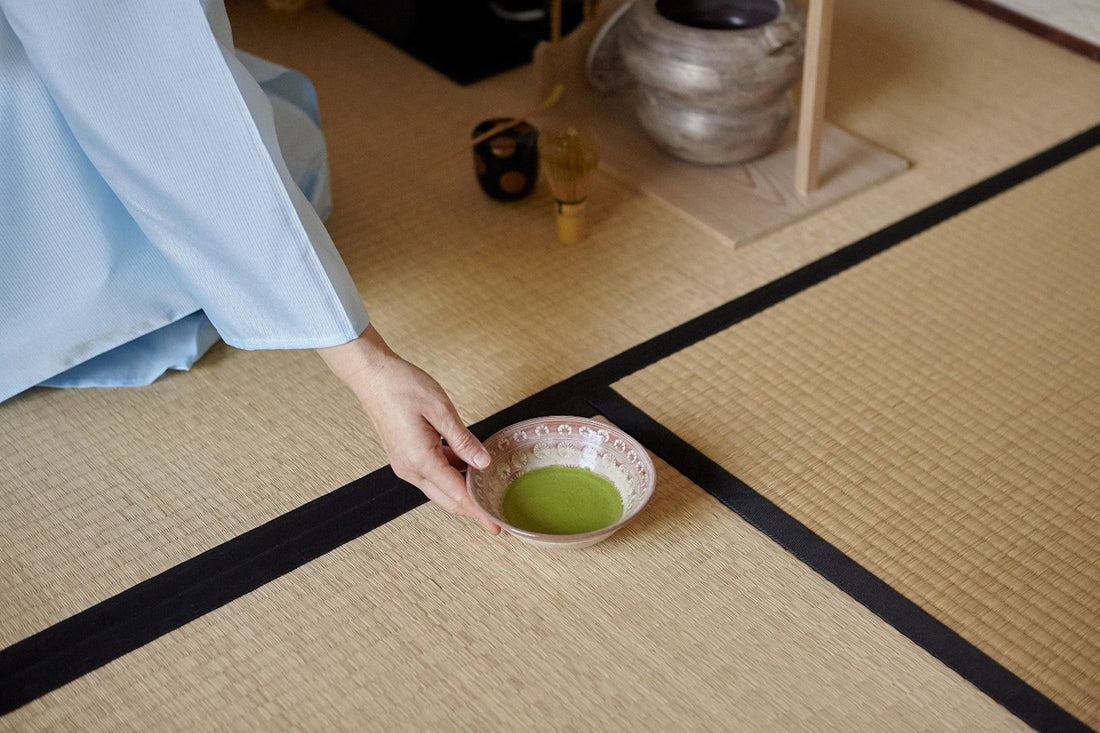
Why Not All Japanese Matcha is Created Equal
Share
Cultivating the ideal tasting matcha is both a science and an art. Matcha cultivation has been practiced since the 11th century, starting with the Zen Buddhist monks. It’s evolved into a more sophisticated and commercialized practice yet the best matcha producers preserve the traditional techniques that give matcha its signature flavour and allure.
The are plenty of factors that will affect the final matcha product. The primary factors are terroir, the time length of shading, the grinding technique, and matcha tea blending. We’ll review these factors in detail to help you understand their impact on matcha’s delicate flavour and quality.
Location, Location, Location

When it comes to matcha, location matters. Selecting an ideal terroir for tea leaf growing not only provides an abundance of crop, but its conditions allow the delicate Camellia sinensis plant to develop the correct undertones and flavour. Remember, green tea leaves are harvested only a handful of months out of the year.
Green tea plants do well in moderate-cool temperatures. The best geography for growing matcha is generally areas with hilly terrain and proximity to freshwater. Besides adding moisture back into the plants through its evaporated form: mist and fog; freshwater percolates the soil with valuable nutrients and minerals, increasing its natural fertility. One of the best examples of an ideal terroir for growing matcha is in the birthplace of matcha, Uji, Kyoto.
Uji is uniquely positioned between two river basins and is surrounded on all sides by rolling hills between two mountain ranges. This geography allows for river fog and mountain mist to be trapped over the field, providing ideal moisture to the tea plants.
Soil
The red-yellow soil in Uji is slightly acidic, which is favourable to green tea plants. This type of soil type is unique to Uji.
The Tradition of Finest Matcha
Tea leaves in Uji are shaded for a period of 2-4 weeks which increases the chlorophyll and L-theanine content, contributing to a sweeter taste and a savoury umami mouthfeel. Only the finest, “first-flush” young tea leaves are reserved for ceremonial grade matcha.
Due to the hilly topography of Uji, it’s hard to operate machines so most tea leaves are handpicked and sorted. Handpicking produces superior quality matcha but is also more expensive, labour intensive and lower yield.
Once picked, the leaves are steamed to retain their green colour and aroma. The leaves are then air-dried, destemmed and deveined before being carefully ground with a traditional Japanese stone mill to produce a beautiful, fine green powder.
The Art of Blending
Contrary to popular belief, blending matcha is a quintessential step in producing the most balanced and ideal flavour profile in matcha. Only tea masters can blend matcha for commercial use. At Domatcha, we’ve worked with the same esteemed 16thgeneration tea master since the beginning—Mr. Kazunori Handa. Blending matcha ensures consistency across harvest seasons and that all the flavours arise on the palette harmoniously. For more information on why we blend matcha, check out this article on Single Origin Matcha vs Blended.
Areas in Japan Not Suitable for Growing Matcha
Low-lying flat fields are less desirable for matcha cultivation. This is because the mountains and hills protect the tea leaves against the harsh sun and reduce moisture loss. This helps leaves grow slower and retain more nutritional content and flavour. Two distinct features of lower-grade matcha are:
- Colour--Dull, army green, yellowish, or brown. This is likely caused by failing to completely remove the stems and veins from the leaves before grinding.
- Flavour—lacks the savoury umami notes and is bitter due to improper shading, time of harvest, lack of deveining and destemming.
Conclusion
Producing high-quality matcha is a delicate and precise process. At the most fundamental level, terroir will have a resounding impact on the flavour and quality of the final tea. Intuition and experience are not to be overlooked in creating matcha as it is a time-sensitive project that requires thorough care and attention from the cultivator. Even within Japan, there is a wide range in quality and matcha grades you should be aware of.
At Domatcha, we carefully source our raw materials from only two regions. All our conventional matcha comes from Uji, Kyoto, also known as one of the best locations to grow matcha. Our organic line comes from a family-owned business in Kagoshima. We’re fortunate to work exclusively with one of the premium matcha suppliers in Japan, Marukyu Koyamaen. Their team of tea experts have helped us formulate some of the most luxurious blends, Master’s Choice and the first decaf matcha on the market, Master’s Decaf.